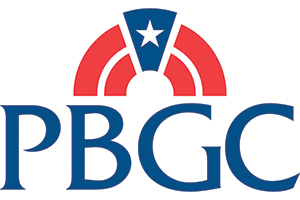Multiemployer Pensions Thriving in Bull Market
A pair of reports on the health of the multiemployer pension system are shedding light on healthy plans and how a proposal to bail out those in grave danger of collapsing would financially hit taxpayers.
One from Milliman Inc., a pension and retirement consulting group, found that the shortfall across all multiemployer pensions fell by $21 million to $125 billion during the six-month period ending June 30. The shortfall is the difference between what’s coming in (contributions and profits on investments) and what’s going out (benefits to retirees and overhead costs).
“Multiemployer plan funding as of June 30, 2017, is nearing its best position since the market collapse of 2008,” the Milliman report concluded.

A second study from American Action Forum, a conservative think tank, argued that a plan to save critically-declining pension plans, such as the Central States Pension Fund and New York State Teamsters Fund, would cost taxpayers at least $7 billion.
In the United States, about 10% are in danger of running out of money, according to documents filed with the Internal Revenue Service and Pension Benefit Guaranty Corp. The vast majority are in good shape.
Pensions are benefiting from a bullish stock market reaching record levels this year, according to Milliman, providing fund managers higher returns on their investments. The Standard and Poor’s 500 has nearly tripled since the Great Recession of 2008 and grown every year since then, except for 2015.
The Milliman study found that the combined funded percentage of multiemployer pensions as of June 30 was 81%, better than the 77% at the end of last year. Researchers crunched the numbers on nearly 1,300 plans’ IRS Form 5500 filings.
“The gap between the funded percentages of critical versus noncritical plans has widened considerably since the market crash. The aggregate funded percentage of critical plans remains around 60% as of June 30, 2017, while the funded percentage of noncritical plans is approaching 90% after a strong uptick in the first six months of 2017,” the report found.
For the almost 10% of plans in poor shape, there is a proposal UPS Inc. backs that would offer credit assistance through a five-year low-interest government loan.
Qualifying pensions could borrow up to five times the shortfall at a 1% interest rate in exchange for lowering benefits to retirees. Funds could renew the loan for two additional five-year terms. During the five years, fund managers would only have to pay interest. Should a pension plan use three loans, the 30-year term to pay back the principal would not start until year 15.
The American Action Forum studied 55 pension funds considered “critical and declining” with combined assets of $28 billion at the end of 2015.
The think tank estimates that should all the qualifying pensions use the full 15 years, it would cost taxpayers $7.2 billion. However, if one-third of the funds defaulted on the loan terms, then Americans would be out $10.9 billion.
“Moreover, the federal backstop for these plans, the Pension Benefit Guaranty Corp. is itself facing insolvency. The intersection of the likely insolvency of multiple pension plans and the projected insolvency of the federal backstop raises the likelihood of federal intervention,” the report found.
Several proposals are on the table to stanch the wound, each requiring someone to pay more money.
One proposal would establish a risk pool to backstop the credit assistance program, using new fees and contributions from plan stakeholders. The PBGC wants to raise employer-paid premiums by $7 per participant (currently $28 per participant), yielding an additional $70 million per year, the agency believes. Other proposals would create an employer or employee surcharge of a couple dollars per month that would go to the PBGC. Another idea would be to charge fees to the union based on the number of active participants.
However, experts are worried that these fees risk alienating employers and could persuade them to switch to defined contribution 401k plans.

